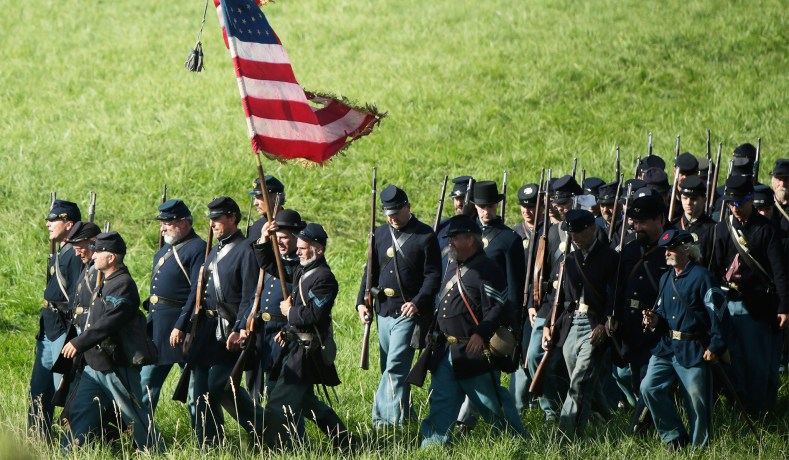Similarly, citizens in states who remained loyal to the United States did not all feel a strong commitment towards dissolving the institution of slavery, nor did they believe Lincoln’s views represented their own. Thus, while the historiography has traditionally referred to the “Union” in the American Civil War as “the northern states loyal to the United States government,” the fact is that the term “Union” always referred to all the states together, which clearly was not the situation at all. In light of this, the reader will discover that the word “Union” will be largely replaced by the more historically accurate “Federal Government” or “U.S. Government.” “Union forces” or “Union army” will largely be replaced by the terms “U.S. Army,” “Federals,” or “Federal Army.”
However, it’s not just “the historiography” in the abstract that has referred to the states loyal to the federal government as “the Union.” The people who fought to preserve the Constitutional order called their side “the Union,” too. In his memoirs, Ulysses S. Grant referred many times to the “Union army” or “Union troops.” Countless documents written during the Civil War (by those who fought against the Confederacy) spoke of the “Union army.” Referring to the effort to preserve the U.S. federal government during the Civil War as “the Union” is not some retrospective invention of historians.
In fact, it’s arguable that erasing the term “the Union” from historiographical discourse, far from being “more historically accurate,” distorts the vision of Lincoln, Grant, and many other Americans.
“Union” has a particular charge in American discourse, from the Constitution’s “more perfect Union” onward. In his first inaugural address, Lincoln reflected on the centrality of the hopes of union for the American republic. He held in that address that secession was not just the splintering of the United States but the obliteration of political order: “The central idea of secession is the essence of anarchy.” The secession crisis threatened the U.S. government, but Lincoln and his contemporaries also saw violent secession as threatening the prospect of democratic governance in general.
The project of Union was about the U.S. federal government, but it was about more than that, too. Union was the hope of reconciling conflict within a democracy. Union was the assertion of the rule of law over factional violence. Union was securing the prospect of republican liberty. For many Americans, the army that marched under the Stars and Stripes was in that deeper sense the Union army.
In his funeral sermon for Abraham Lincoln, the minister Phineas Gurley did not once mention the “federal government” or even “United States.” Instead, he spoke again and again about “union”: “through all these long and weary years of civil strife, while our friends and brothers on so many ensanguined fields were falling and dying for the cause of Liberty and Union.” If one of the goals of historical study is to capture the textures of past eras, erasing “the Union” and “the Union army” from historical discourse would make it harder to understand the passions and principles of those who risked their lives to preserve the American republic.
–nationalreview.com


